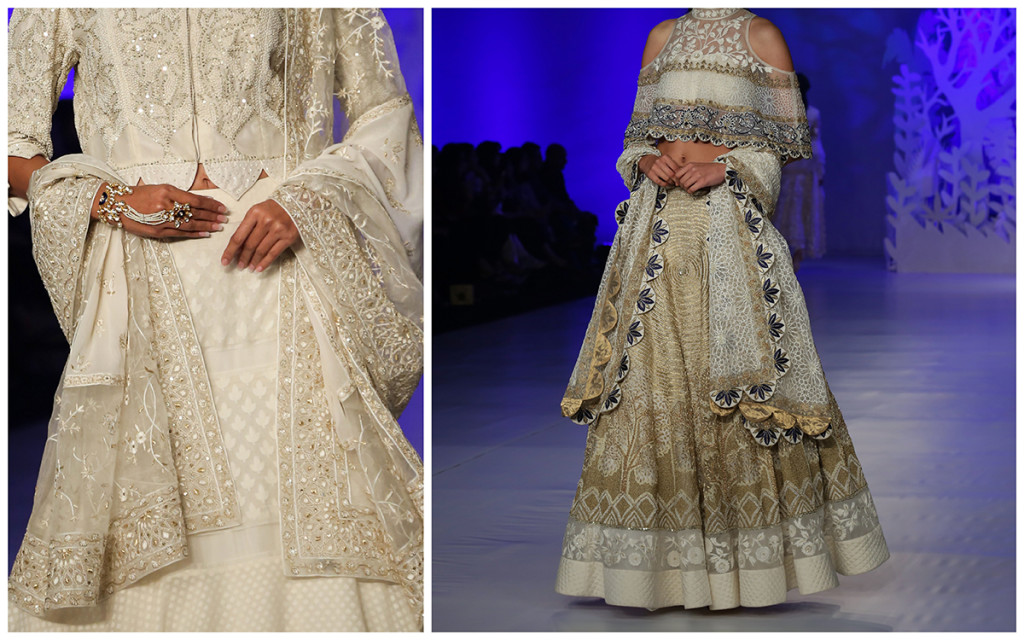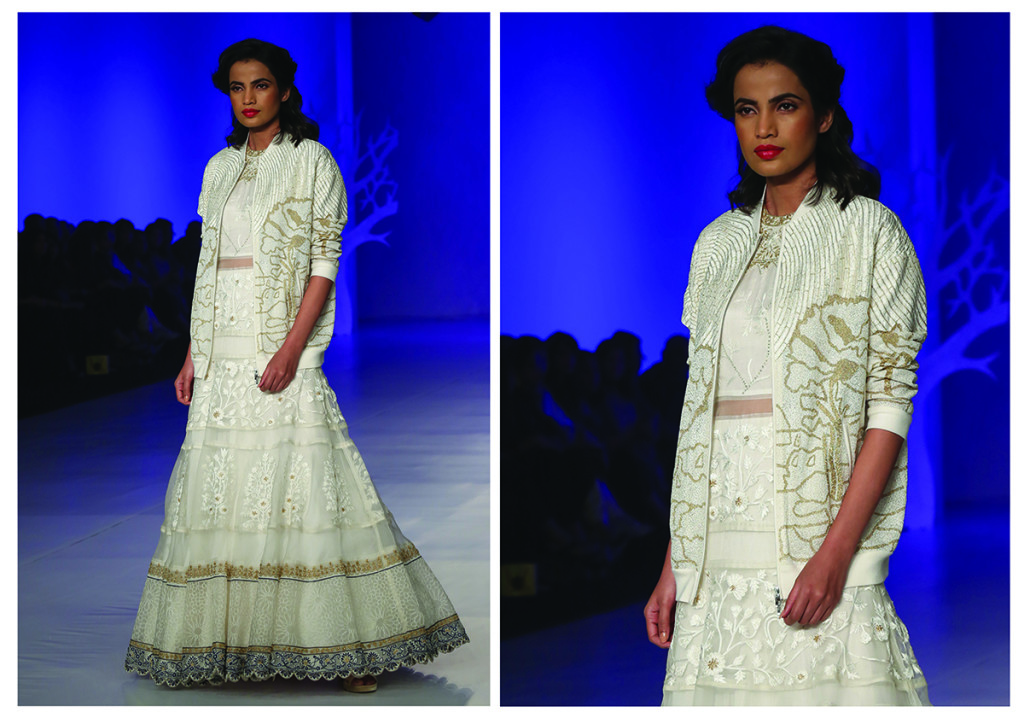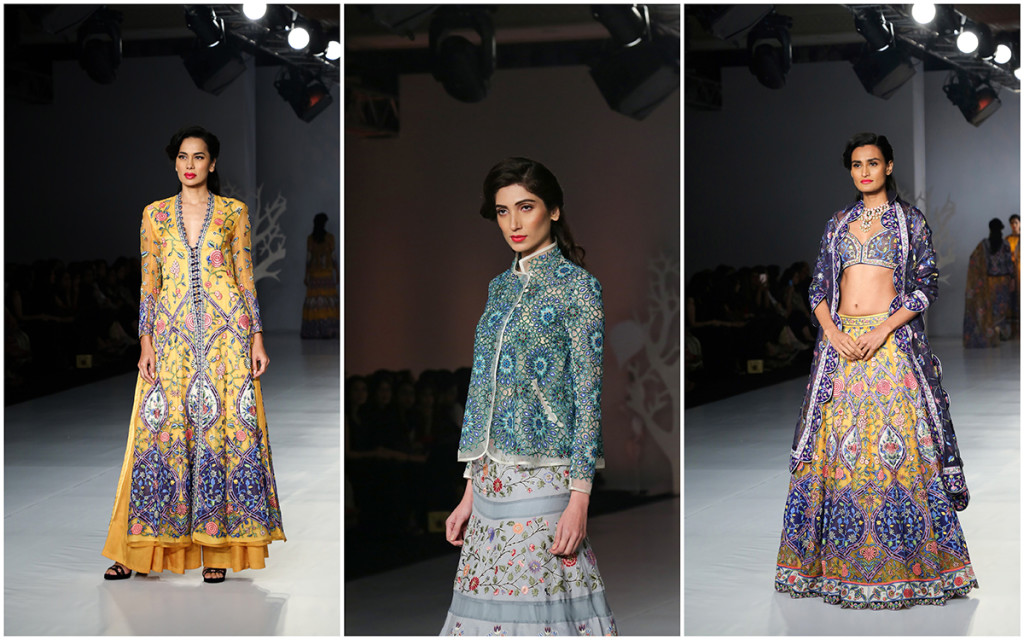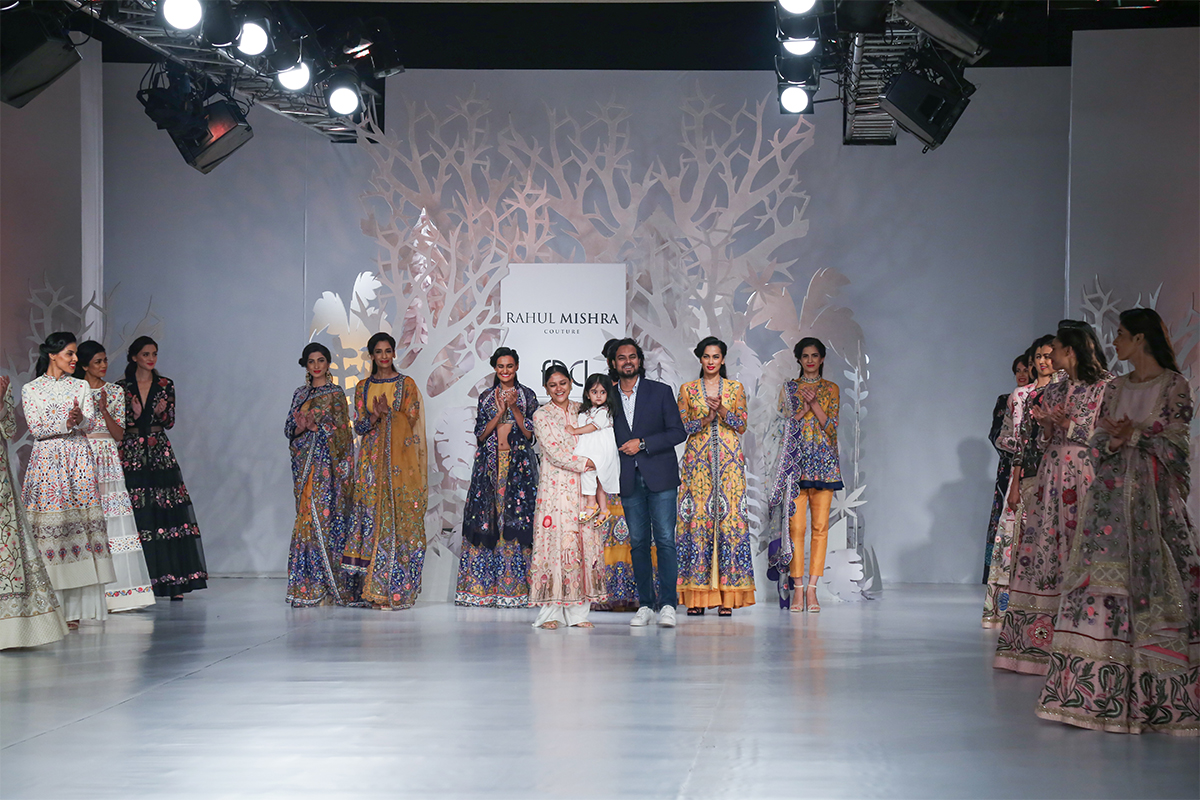The Blue Mosque, Islamic techniques like Girikh to Spanish inspirations like Majolica, Rahul Mishra took us around the world, in his 46 piece camel safari and then gave it a modern twist by making couture easy to wear and wash!
By Asmita Aggarwal
What happens when you take 5,000 hours of labour to make clothing for a 25-minute show in the hope that you can give employment to over two million workmen? You could probably be thinking like Rahul Mishra who on the fourth day of the India Couture Week 2017 obliterated his monochromes and embraced colour, unabashedly. I like to surprise myself and I did that this time also. I never imagined myself doing these bright colours together. There was a lot of research that went into it. I studied the Blue Mosque, Turkey and Taj Mahal, Agra, where one wall in itself is very detailed and theres shine, satrangi tile work, floral motifs, Meenakari but, still looks like its feather light. So, I do monumental details with Zen-like simplicity, he explains.
The intricacies could be seen in the scalloped ends of his duppattas as he decided to start his show with an all white palette complete with pearl haath phools. The mood remained tone-on-tone, introducing translucent capes, hints of shimmer in the white and gold saris, and Rahul admits that he did use sequins, but subdued their glitter by concealing them under fabric. Theres a lot of experimentation at the Paris Fashion Week. Van Gogh-inspired paintings gave form to my clothes and I wondered what it would look like if Van Gogh painted in gold and white. I even explored the technique of Pointillism (small, distinct dots of colour are put in the form of patterns to make an image), he adds.

But what most designers would never attempt to do, Rahul flirts with ease…add sportswear elements to couture. Some seasons back, he got the ubiquitous bomber jacket to team up with his lehengas, and this time it was a zipped jumper that he transformed into pure luxe (white and gold) with Girikh work, which comes from a Turkish technique where you knot a geometric ornament, used by the Persian dynasty in 1,300 AD paying homage to the splendour of Islamic artwork.

Coming from Kanpur, Rahul hasnt forgotten his middle-class roots that why you see the humble sparrow that flies in occasionally on Banarasi lehengas and the larger-than-life cinnamon trees, which were a complete 180 degree from the Majolica technique-influenced blouses which was inspired by the tin-lead glazes used around the Mediterranean. This style of painting on a white opaque glaze came from island of Majorca (Maiorca). Later it got linked with the Moorish invasion of Spain in the eighth century.

His gypsy lehengas in silvery hues, and big bold flowers are a departure from Rahul Mishras aesthetics but he admits, Yes, there were sequins underneath the French knots as were trying to do controlled bling. And so was the ravine-necked choli which exposed an abundant cleavage, in a contentious bridal wear market, Rahul, is finally understanding, the need to be commercial, not in a blinding way but a rather testing the waters manner. There is always fear of criticism. Our country might not have a critics column anymore, which isnt good. Fashion moves with criticism. But, I get a lot of challenges in Paris, he smiles.
Most of his offering, almost all were hand embroidered and he says, he also worked on something to the lines of Paul Signacs (French Neo-Impressionist painter ) artwork called, The Pine Tree at St. Tropez. So, we infused that in the very first gold lehenga that you saw. We tried to include a bit of modern art in our work. When we do the typical gold lehenga, we try to imagine the possibilities of a metallic lehenga. I do not want to put myself into one category. I want to be able to surprise myself, he explains.
And he did take a leap forward by not just using Banarasi cutwork, one section was just translucent voile, and he sourced the fabric from Japan. When it is woven with another fabric, it forms machine-washable couture. The chintz you saw was all machine-washable, he says. And it is all these ingenious thoughts that he converts into action that makes Rahul, so, so cool.
Most of the designers or brands are still at the same place where they were five years ago. So, the surprise needs to come from a designers side as well and Rahul kept his promise!

